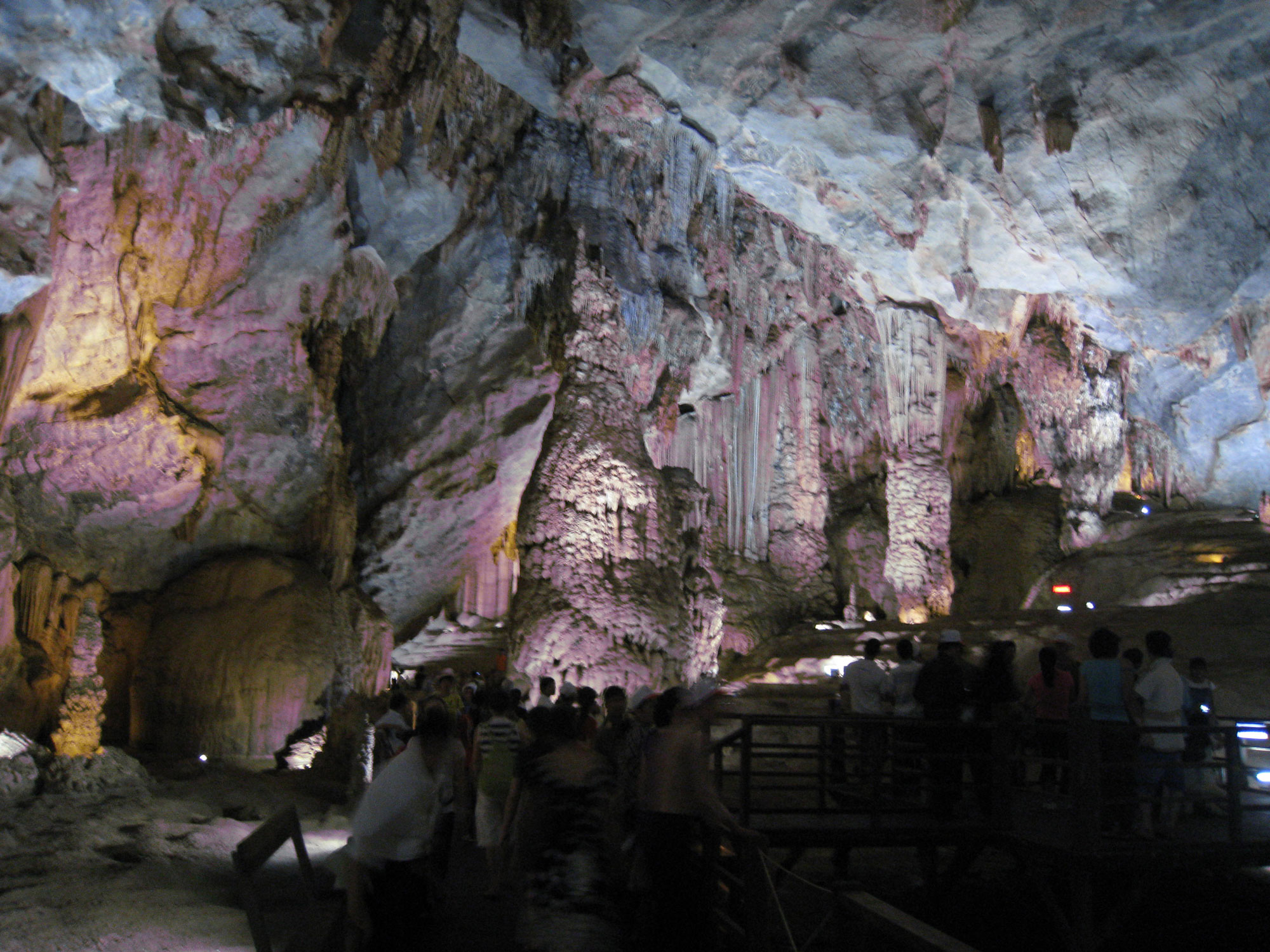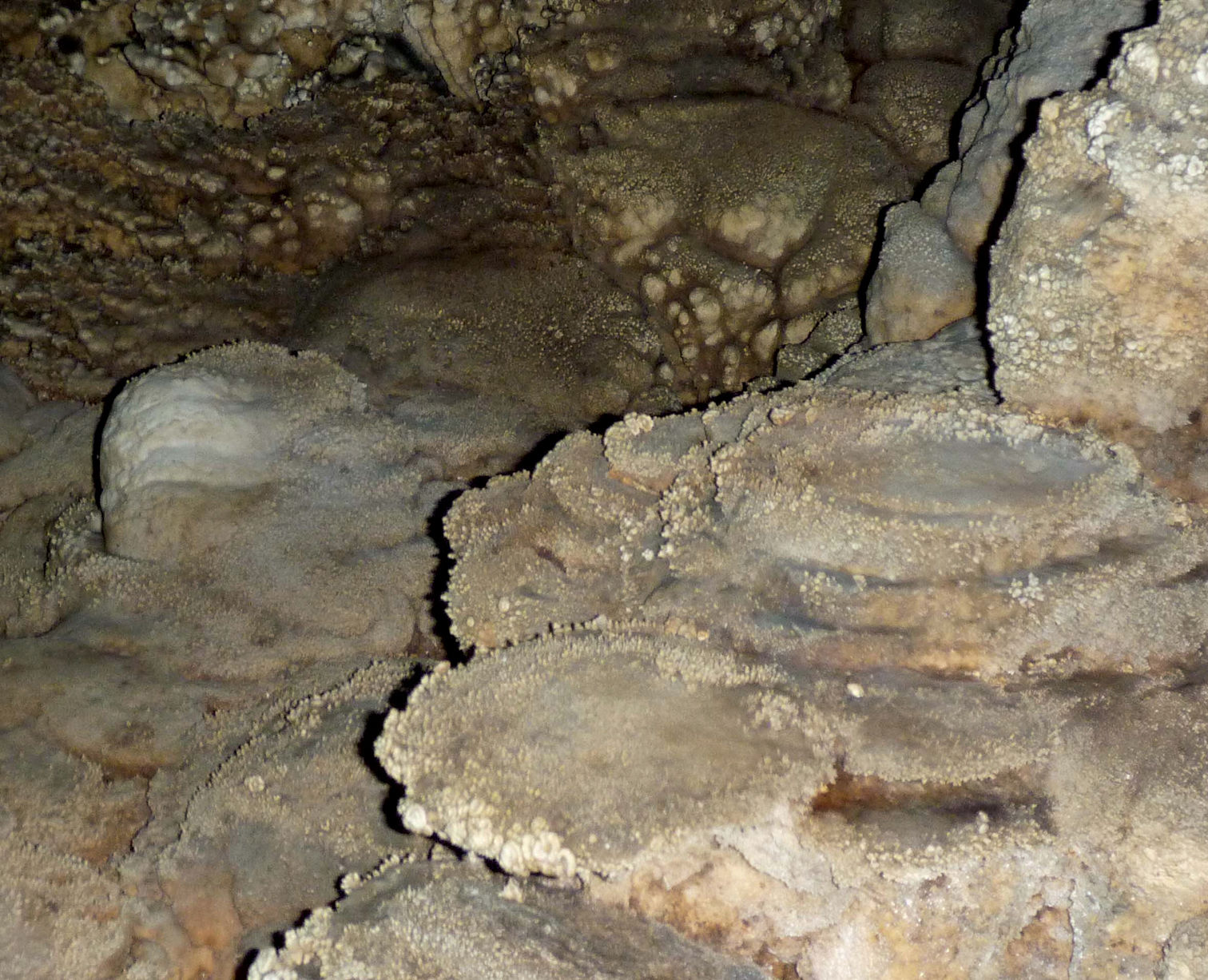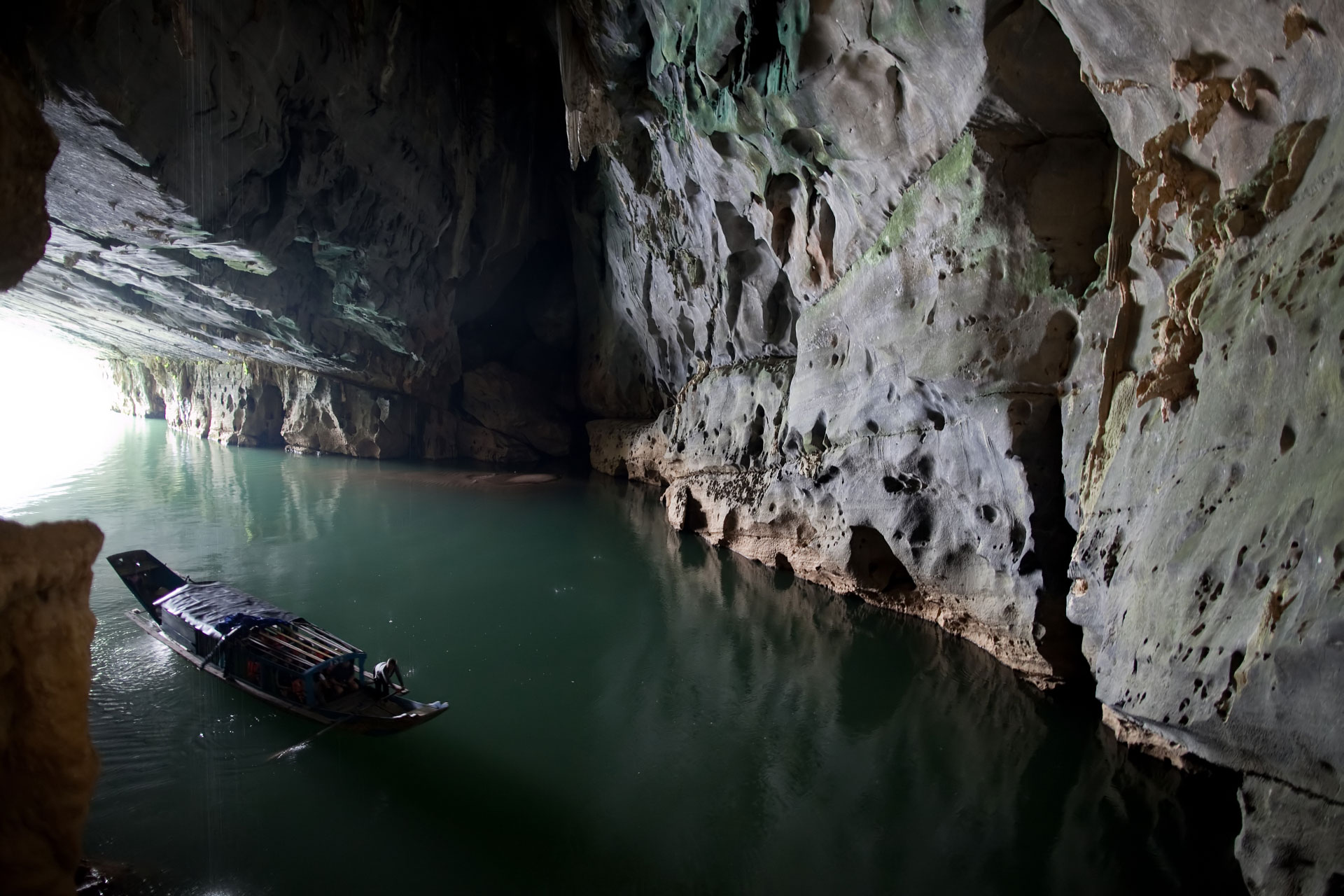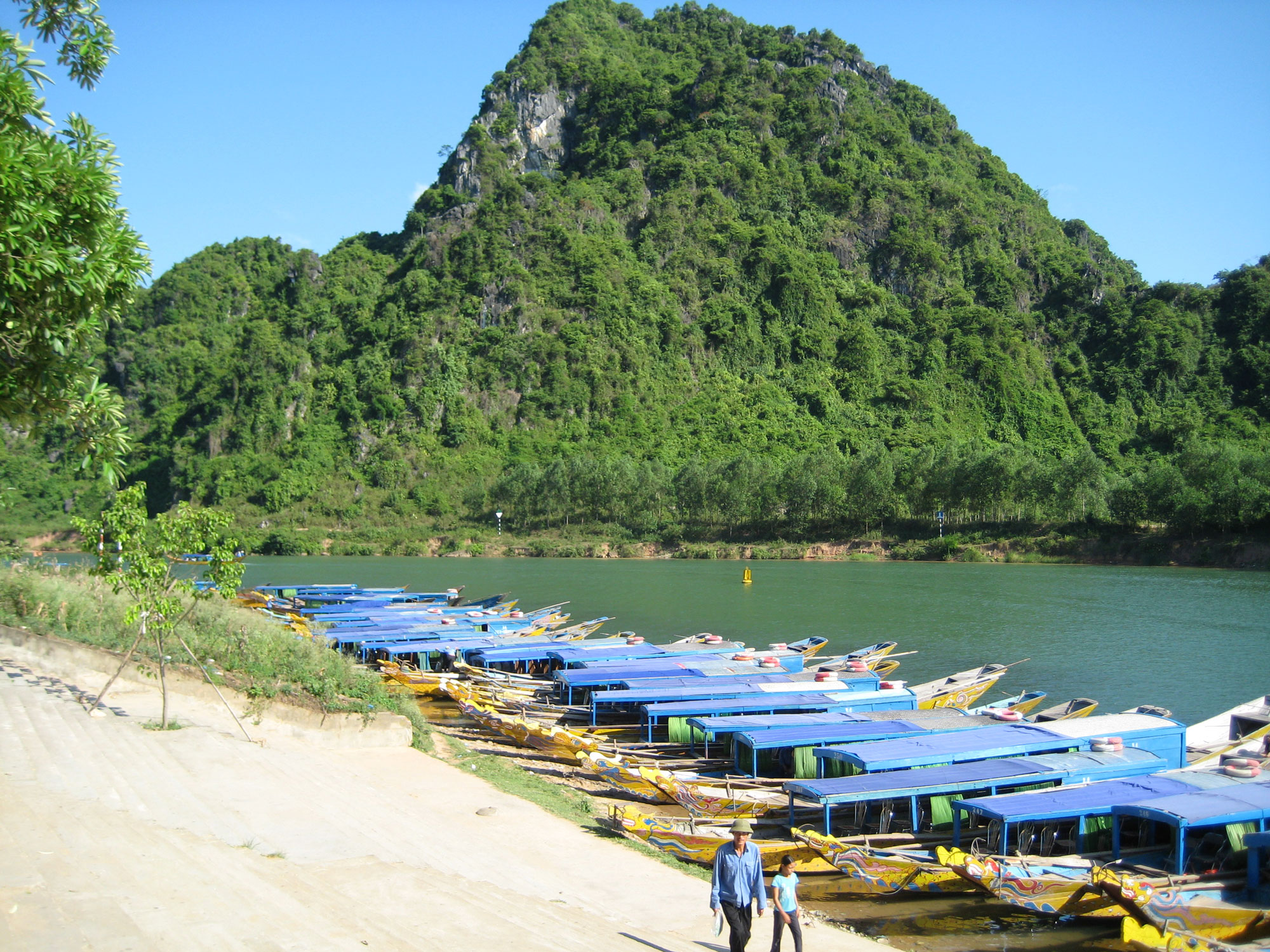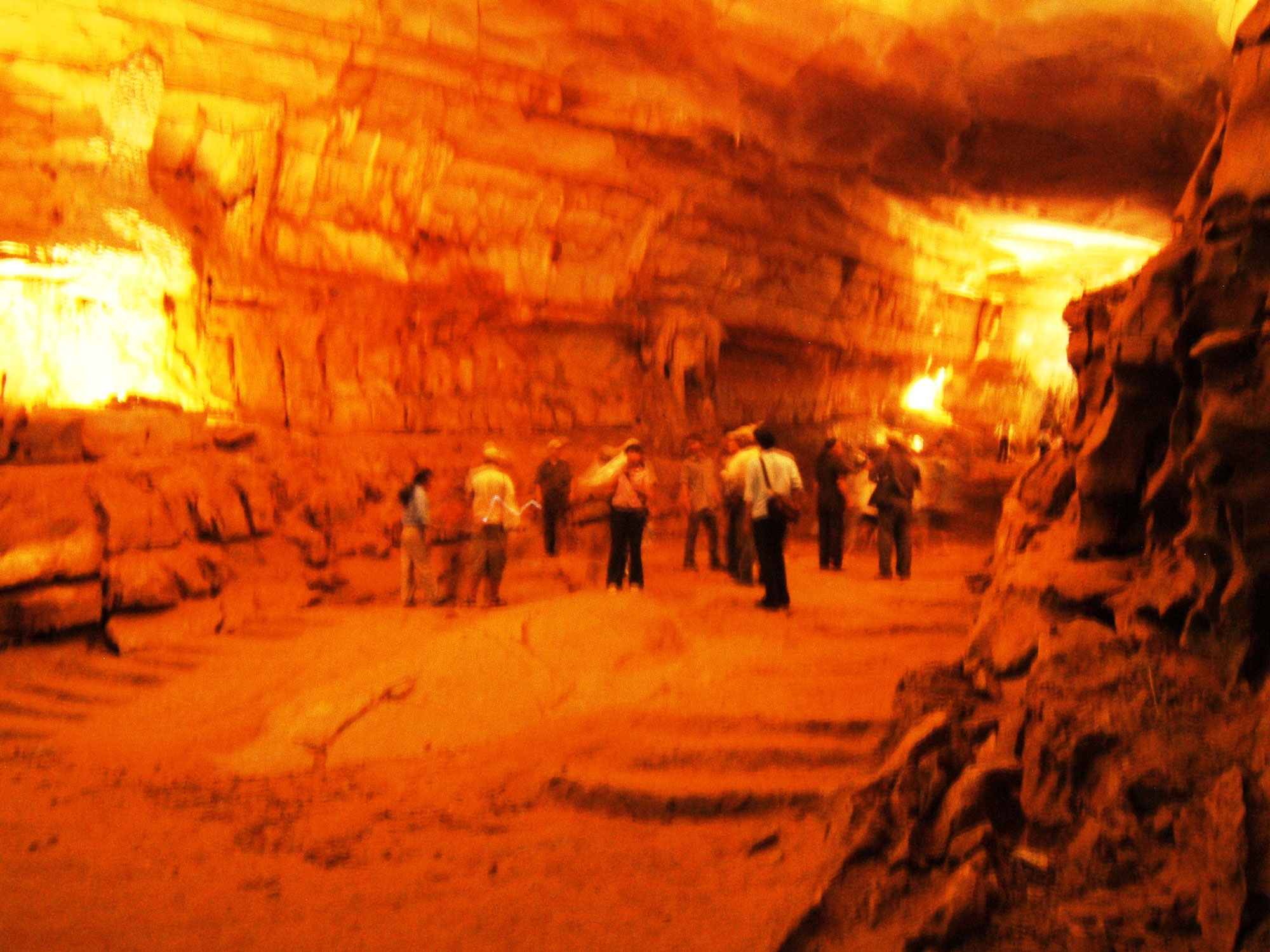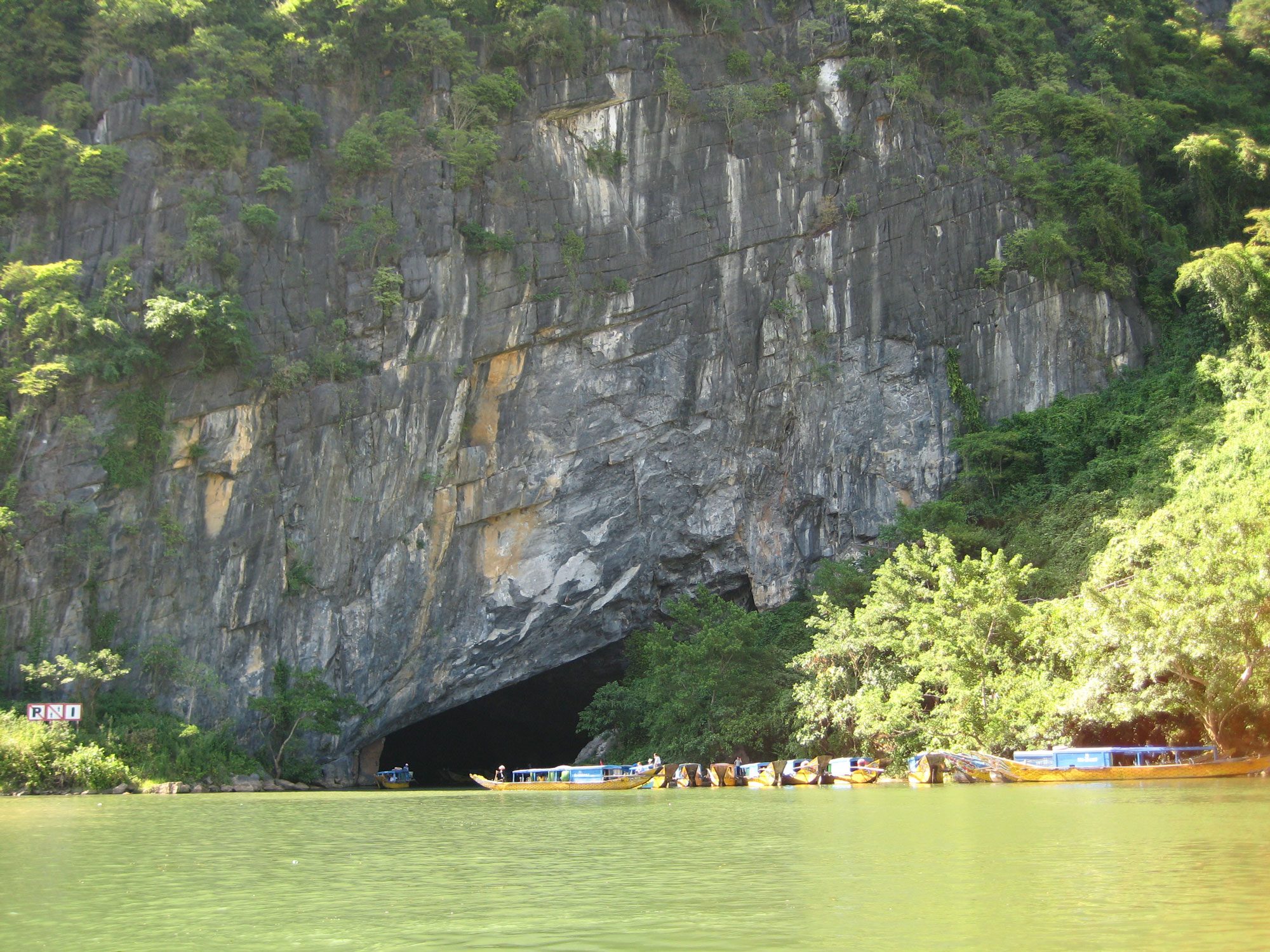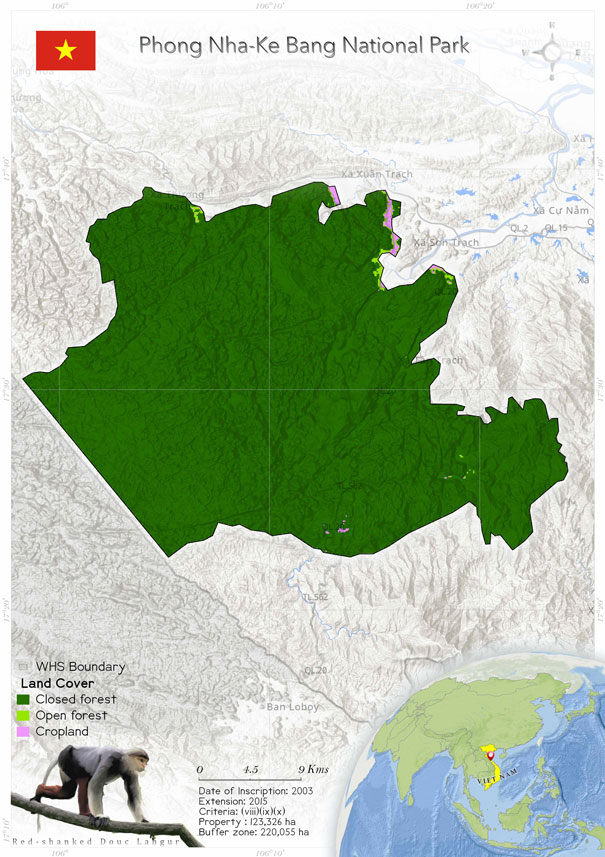
Phong Nha-Ke Bang National Park (951)
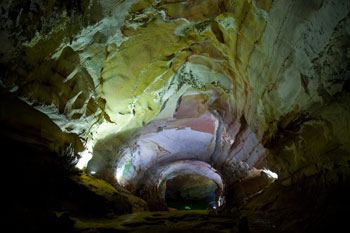 Phong Nha-Ke Bang National Park is situatedin Quang Binh Province, of Vietnam. It is famous for itsancient caves and underground rivers. Together withHin Namno Nature Reserve, in the Public DemocraticRepublic of Laos, the national park forms SoutheastAsia’s most extensive karst landscape. The place isvery famous among tourists as the most beautiful andmarvellous limestone karst ecosystem in the world.The karst formation has led to the formation of cavesand tunderground rivers. The biodiversity of the placeis very rich. The site is located in one of the 25 mega-diverse countries, where 10% of the world’s speciesare found. Over 800 vertebrate species, including 154mammals, 117 reptiles, 58 amphibians, 314 birds and 170fishes, are found at the site. The property is under thecontrol of the National Government, and the NationalPark Management Board handles the management ofthe property. There are three management zones: astrictly protected zone, an ecological restoration zoneand an administrative/service zone. There are severalissues related to the property, such as wildlife poaching,illegal harvesting of forest products, collection of NTFPand tourism development projects that might affect the property. The upcoming tourism projects have to gothrough environment impact assessments before theyare approved. Tourism is a threat that has positive andnegative impacts, and so a well-managed plan is needed.According to the IUCN assessment of 2020, the propertyfalls under the category "Significant Concerns", and thepresent issues and threats need to be addressed as soonas possible. The State Party has also reported severalissues to the World Heritage Committee in the Stateof Conservation Report 2019, such as a decrease in thenumber of large mammals, invasions of alien species andlimited availability of funds for research and creation ofawareness.
Phong Nha-Ke Bang National Park is situatedin Quang Binh Province, of Vietnam. It is famous for itsancient caves and underground rivers. Together withHin Namno Nature Reserve, in the Public DemocraticRepublic of Laos, the national park forms SoutheastAsia’s most extensive karst landscape. The place isvery famous among tourists as the most beautiful andmarvellous limestone karst ecosystem in the world.The karst formation has led to the formation of cavesand tunderground rivers. The biodiversity of the placeis very rich. The site is located in one of the 25 mega-diverse countries, where 10% of the world’s speciesare found. Over 800 vertebrate species, including 154mammals, 117 reptiles, 58 amphibians, 314 birds and 170fishes, are found at the site. The property is under thecontrol of the National Government, and the NationalPark Management Board handles the management ofthe property. There are three management zones: astrictly protected zone, an ecological restoration zoneand an administrative/service zone. There are severalissues related to the property, such as wildlife poaching,illegal harvesting of forest products, collection of NTFPand tourism development projects that might affect the property. The upcoming tourism projects have to gothrough environment impact assessments before theyare approved. Tourism is a threat that has positive andnegative impacts, and so a well-managed plan is needed.According to the IUCN assessment of 2020, the propertyfalls under the category "Significant Concerns", and thepresent issues and threats need to be addressed as soonas possible. The State Party has also reported severalissues to the World Heritage Committee in the Stateof Conservation Report 2019, such as a decrease in thenumber of large mammals, invasions of alien species andlimited availability of funds for research and creation ofawareness.
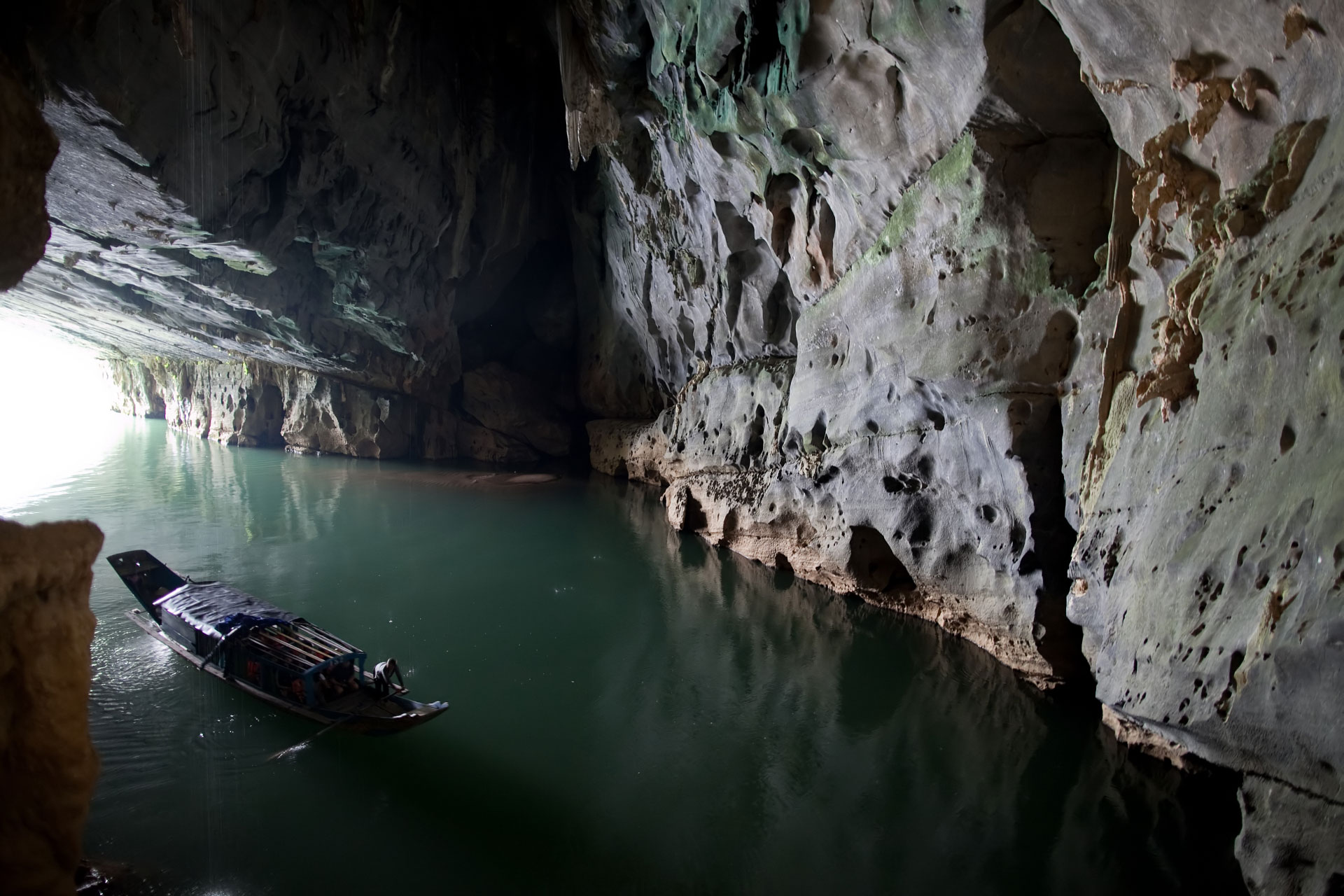 Phong Nha-Ke Bang National Park is situated incentral Viet Nam, in the globally significant NorthernTruong Son Range ecoregion, in Quang Binh Province,which is 500 km south of Hanoi, on the Laotianborder (Larsen 2008). It is located in the middle of theAnnamite Mountain Range. In the west, the propertyshares its boundaries with Hin Namno Nature Reserve,in the Public Democratic Republic of Laos. The PhongNha Ke Bang national parks combine to form the most extensive protected karst area in mainland SoutheastAsia (Larsen 2008). When the site was declared as WorldHeritage Site, it had an area of 85,754 ha, and after itsextension, it has an area of 123,326 ha. The extensionhas increased its integrity and connectivity to thekarst landscape in the Lao PDR. The national park hasterrestrial and aquatic habitats, primary and secondaryforests, sites of regeneration, dense tropical forests andsavanna. It has a number of large caves. The site is alsoknown for its highly fragmented covering rivers, riverinecave systems and tropical limestone forest (Larsen2008).
In 1986 the site was declared a small reserve, having anarea of 5000 ha, but in 1992, its area increased to 41,132ha, as the Phong Nha Nature Reserve. In 2000 it was declared a national park. It was nominated to the World Heritage Site list in 1998 and was given the WHS tag by UNESCO in 2003 (Larsen 2008).
The site is one of the most beautiful and marvellouslimestone karst ecosystems in the world. The karstformation is the oldest significant karst in Asia as ithas metamorphosed since the Paleozoic Era, around400 million years ago. The karst mountains are highlycomplex, with many geomorphic features, and theyhave undergone great changes because of tectonicactivity. Apart from being very complex, the karstlandscape is also very ancient, having rich geodiversityand geomorphic features of considerable significance(UNESCO whc.unesco.org).
The karst formation processes have resulted invarious underground rivers and many caves (dry caves,suspended caves, dendritic caves and intersectingcaves). Son Doong Cave is famous as the world’slargest (diameter and continuity) cave passage. It wasdiscovered in 2009. The caves provide a significant valueto the park, and they are the flagship attraction of thepark (Larsen 2008). More than 300 caves have beenfound in the park, and the Hang Vom cave system isone of the longest, having a 15,310 m long cave passage(Debevec et al. 2012).
Apart from the spectacular beauty of the park, arisingfrom its caves and rivers, it also has a rich variety ofplants and animals. Vietnam is one of the 25 most mega-diverse countries, harbouring around 10% of the globalspecies (Larsen 2008). According to a report producedby UNESCO (whc.unesco.org), there are over 800vertebrate species, among which 154 are mammals,117 reptiles, 58 amphibians, 314 birds and 170 fishes.Larsen (2008) reported that 1762 species of plant and1074 species of animal are found at the site, which hasthe highest orchid and primate densities in the country(UNESCO whc.unesco.org).
There are 143 mammal species in Phong Nha-Ke Bang National Park, 45.3% of the total known mammalspecies in Vietnam. Out of 24 primate species, nineare found here. The site is home to the world’s largestpopulation of the globally endangered primate speciesTrachypithecus hatinhensis (Dang & Nghia et al. 2018).There are 132 reptile species, of which 40 are amphibiansand 92 are reptiles. Twenty per cent of these speciesare listed in the Red Data Book of Vietnam (Ziegler et al.2004). Thirteen different vegetation types are found in thepark, with 1436 plant species belonging to 151 families.Ninety-seven of these species are present on the RedList, and 34 are in the Nearly Threatened category ofthe IUCN. The forest of the national park is dividedinto three central forests: evergreen dense monsoonlimestone tropical forest (altitude below 500–600 m),evergreen dense monsoon tropical forest (altitude500/600–900 m) and subtropical monsoon forest(altitude above 900 m) (Meijboom & Lanh 2002).
Phong Nha-Ke Bang National Park is situated incentral Viet Nam, in the globally significant NorthernTruong Son Range ecoregion, in Quang Binh Province,which is 500 km south of Hanoi, on the Laotianborder (Larsen 2008). It is located in the middle of theAnnamite Mountain Range. In the west, the propertyshares its boundaries with Hin Namno Nature Reserve,in the Public Democratic Republic of Laos. The PhongNha Ke Bang national parks combine to form the most extensive protected karst area in mainland SoutheastAsia (Larsen 2008). When the site was declared as WorldHeritage Site, it had an area of 85,754 ha, and after itsextension, it has an area of 123,326 ha. The extensionhas increased its integrity and connectivity to thekarst landscape in the Lao PDR. The national park hasterrestrial and aquatic habitats, primary and secondaryforests, sites of regeneration, dense tropical forests andsavanna. It has a number of large caves. The site is alsoknown for its highly fragmented covering rivers, riverinecave systems and tropical limestone forest (Larsen2008).
In 1986 the site was declared a small reserve, having anarea of 5000 ha, but in 1992, its area increased to 41,132ha, as the Phong Nha Nature Reserve. In 2000 it was declared a national park. It was nominated to the World Heritage Site list in 1998 and was given the WHS tag by UNESCO in 2003 (Larsen 2008).
The site is one of the most beautiful and marvellouslimestone karst ecosystems in the world. The karstformation is the oldest significant karst in Asia as ithas metamorphosed since the Paleozoic Era, around400 million years ago. The karst mountains are highlycomplex, with many geomorphic features, and theyhave undergone great changes because of tectonicactivity. Apart from being very complex, the karstlandscape is also very ancient, having rich geodiversityand geomorphic features of considerable significance(UNESCO whc.unesco.org).
The karst formation processes have resulted invarious underground rivers and many caves (dry caves,suspended caves, dendritic caves and intersectingcaves). Son Doong Cave is famous as the world’slargest (diameter and continuity) cave passage. It wasdiscovered in 2009. The caves provide a significant valueto the park, and they are the flagship attraction of thepark (Larsen 2008). More than 300 caves have beenfound in the park, and the Hang Vom cave system isone of the longest, having a 15,310 m long cave passage(Debevec et al. 2012).
Apart from the spectacular beauty of the park, arisingfrom its caves and rivers, it also has a rich variety ofplants and animals. Vietnam is one of the 25 most mega-diverse countries, harbouring around 10% of the globalspecies (Larsen 2008). According to a report producedby UNESCO (whc.unesco.org), there are over 800vertebrate species, among which 154 are mammals,117 reptiles, 58 amphibians, 314 birds and 170 fishes.Larsen (2008) reported that 1762 species of plant and1074 species of animal are found at the site, which hasthe highest orchid and primate densities in the country(UNESCO whc.unesco.org).
There are 143 mammal species in Phong Nha-Ke Bang National Park, 45.3% of the total known mammalspecies in Vietnam. Out of 24 primate species, nineare found here. The site is home to the world’s largestpopulation of the globally endangered primate speciesTrachypithecus hatinhensis (Dang & Nghia et al. 2018).There are 132 reptile species, of which 40 are amphibiansand 92 are reptiles. Twenty per cent of these speciesare listed in the Red Data Book of Vietnam (Ziegler et al.2004). Thirteen different vegetation types are found in thepark, with 1436 plant species belonging to 151 families.Ninety-seven of these species are present on the RedList, and 34 are in the Nearly Threatened category ofthe IUCN. The forest of the national park is dividedinto three central forests: evergreen dense monsoonlimestone tropical forest (altitude below 500–600 m),evergreen dense monsoon tropical forest (altitude500/600–900 m) and subtropical monsoon forest(altitude above 900 m) (Meijboom & Lanh 2002).
Criterion (viii)
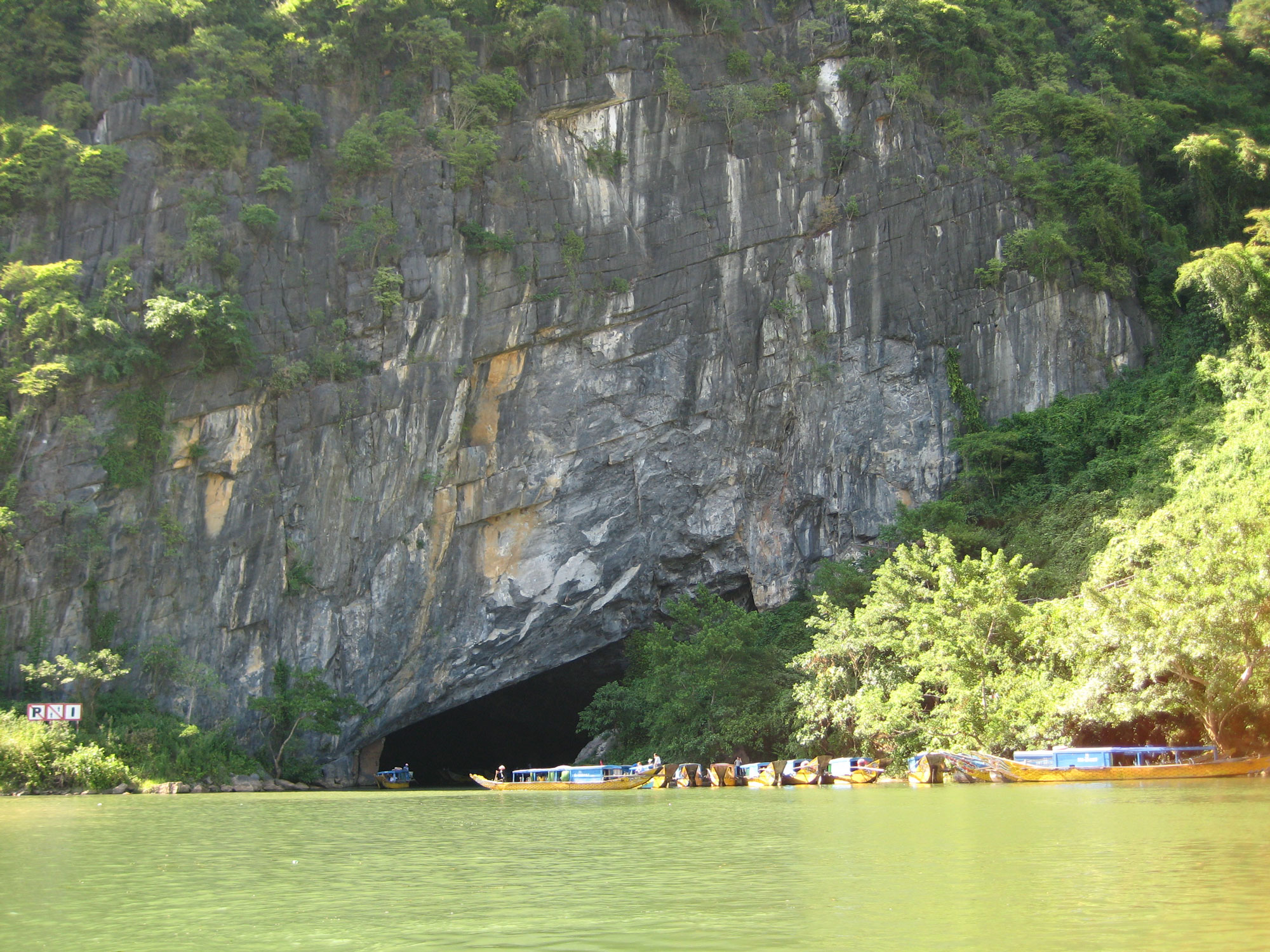 Phong Nha-Ke Bang National Park is part of alarger dissected plateau, which encompasses the PhongNha, Ke Bang and Hin Namno karsts. The limestone isnot continuous and demonstrates complex interbeddingwith shales and sandstones. This has led to a particularlydistinctive topography. The caves demonstrate a discretesequence of events, leaving behind different levels ofancient abandoned passages; evidence of major changesin the routes of underground rivers; changes in thesolution regime; deposition and later re-solution of giantspeleothems and unusual features such as sub-aerialstromatolites. On the surface, there is a striking series ofnatural landscapes, ranging from deeply dissected rangesand plateaux to an immense polje. There is evidence of atleast one period of hydrothermal activity in the evolutionof this ancient mature karst system. The Son DoongCave, first explored in 2009, could contain the world’slargest cave passage in terms of diameter and continuity.The plateau is one of the finest and most distinctiveexamples of a complex karst landform in Southeast Asiaand the property is of great importance for enhancingour understanding of the geologic, geomorphic and geo-chronological history of the region.
Phong Nha-Ke Bang National Park is part of alarger dissected plateau, which encompasses the PhongNha, Ke Bang and Hin Namno karsts. The limestone isnot continuous and demonstrates complex interbeddingwith shales and sandstones. This has led to a particularlydistinctive topography. The caves demonstrate a discretesequence of events, leaving behind different levels ofancient abandoned passages; evidence of major changesin the routes of underground rivers; changes in thesolution regime; deposition and later re-solution of giantspeleothems and unusual features such as sub-aerialstromatolites. On the surface, there is a striking series ofnatural landscapes, ranging from deeply dissected rangesand plateaux to an immense polje. There is evidence of atleast one period of hydrothermal activity in the evolutionof this ancient mature karst system. The Son DoongCave, first explored in 2009, could contain the world’slargest cave passage in terms of diameter and continuity.The plateau is one of the finest and most distinctiveexamples of a complex karst landform in Southeast Asiaand the property is of great importance for enhancingour understanding of the geologic, geomorphic and geo-chronological history of the region.
Criterion (ix)
Phong Nha-Ke Bang National Park consists of acomplex limestone landscape, which includes very largecaves and underground rivers. The property includeskarst formations which are some of the oldest and largestin Asia, and it has geological, climatic, hydrographicand ecological conditions which are distinct from otherlimestone karst landscapes. Its cave ecosystems andhabitats are unique with high levels of endemism andadaptations displayed by cave-dependent species. Theproperty constitutes one of the largest remaining areasof relatively intact moist forest on karst in Indochina,with a forest cover estimated to reach 94%, of which84% is thought to be primary forest. Furthermore, theproperty protects globally significant ecosystems withinthe Northern Annamites Rainforests and Annamite RangeMoist Forests priority ecoregions.
Criterion (x)
A high level of biodiversity is found within theproperty, with over 2,700 species of vascular plants andover 800 vertebrate species. Several globally threatenedspecies are also present: 133 plant species and 104vertebrate species have been reported, including severallarge mammals such as the endangered Large-antleredMuntjac, Clouded Leopard, and the critically endangeredSaola. The level of endemism is high, especially in thecave systems. Furthermore, it is estimated that over 400 plant species endemic to Viet Nam are found withinthe property, as well as 38 animal species endemic tothe Annamite range. Several new species to sciencehave recently been found, including cave scorpions, fish,lizards, snakes and turtles, and more species are likely tobe discovered. Importantly, four threatened primate taxaendemic to the Annamites are found within the property:the Hatinh Langur (specialised in karst forest and endemicto Viet Nam and the People’s Democratic Republic ofLao), the black form of the Hatinh Langur, sometimesconsidered as a separate species, the Red-shanked DoucLangur, and the largest remaining population of White-heeked Gibbon.
Status
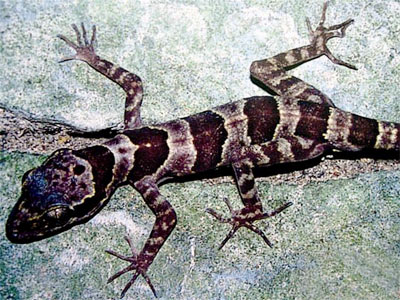 The site is controlled by the Provincial People'sCommittee of Quang Binh. It established the NationalPark Management Board (NPMB) in 1994 (UNESCOwhc.unesco.org). Consequently, the ownership ofthe property has been with the national government(Hübner et al. 2014). The role of the management boardis to manage the property. It looks after the protectionof its land and the forests, which are protected underVietnamese forest law (Hübner et al. 2014). The land isprotected under SUF, which is a policy and legal articlethat came into effect in 2006 and deals with ecotourismactivities (Ly & Xiao 2016). The NPMB appoints thedirectors and approves the budgets and work plans(Larsen 2008). According to Ly and Xiao (2016), themanagement pat the site is a combination of state-management, private-management and joint venturemodels.
The Sustainable Tourism Development Plan 2010–2020is the central guiding document approved by theprovince. The Committee of Quang Binh Province,including the planners and investors, follows thisdocument for tourism development at the provincial level and district government level (Hübner et al.2014). The site is also in the Special National HeritageList (2009) and Special Use Forest System (1999). Anyactivities that will affect the national park or WorldHeritage Site are forbidden inside or outside thepark's boundaries (UNESCO whc.unesco.org). Thereare three management zones in the area: a strictlyprotected zone, an ecological restoration zone and anadministrative/service zone (UNESCO whc.unesco.org)of extent 64,894 ha, 17,449 ha and 3411 ha, respectively(Larsen 2008). The board management has fouradministrative units, namely, a management office withassociated administrative and finance offices, a centrefor science, research and rescue activities, a centre forculture and eco-tourism and the Forest Protection unit(Larsen 2008).
Several threats like wildlife poaching and illegalharvesting of forest products affect the biodiversity andinfluence the integrity of the World Heritage Site. Someprojects for tourism development like cable cars andaccess roads might affect the property in the future. TheHo Chi Minh Highway is constructed towards the northof the park, and it is providing benefits to the park interms of accessibility and tourism. The government ormanagement should implement the recommendationsof the environment impact assessments for projects such as these. Tourism is increasing at the site day by day, resulting inboth positive and negative impacts on the site, creatingsocial and environmental concerns. Appropriateplanning and management are needed to save theproperty from being overcrowded, which will degradethe tourism quality and reduce the benefits obtainedfrom the tourism. Tran et al. (2007) calculated thecarrying capacity of the site to be 11,000 visits in aday. The major tourism activities are cable car riding,mountain climbing, hiking in the national park, etc.
An updated management plan is needed to emphasizethe OUVs of the park, and there should be visitormanagement plans and certified guides to individualcaves, which should control the visitors and providethem an understanding of the values and origin of thecaves. The site is under the category of "SignificantConcern" in the IUCN Outlook.
According to the State of Conservation Report 2019,several issues were reported to the committee by theState Party. The property is facing issues such as areduction in the number of large mammals (there havebeen no traces of elephants). Poaching is in control;however, illegal collection of NFTP is still going on. Funds for research and awareness are lacking. Thecommittee has requested the State Party to continuemonitoring large mammals and make some effortsto stop the poaching. The State Party did not permitcable car projects in some areas of the park, and thecommittee agrees to this decision, saying future projectswill undoubtedly affect the OUV of the property. Thedevelopment of mass tourism and urbanization of thebuffer zone are two concerns. The committee has statedthat every project should go through an environmentimpact assessment before it gets approved. A new planfor tourism management has been suggested by thecommittee, emphasizing conservation and education.
The site is controlled by the Provincial People'sCommittee of Quang Binh. It established the NationalPark Management Board (NPMB) in 1994 (UNESCOwhc.unesco.org). Consequently, the ownership ofthe property has been with the national government(Hübner et al. 2014). The role of the management boardis to manage the property. It looks after the protectionof its land and the forests, which are protected underVietnamese forest law (Hübner et al. 2014). The land isprotected under SUF, which is a policy and legal articlethat came into effect in 2006 and deals with ecotourismactivities (Ly & Xiao 2016). The NPMB appoints thedirectors and approves the budgets and work plans(Larsen 2008). According to Ly and Xiao (2016), themanagement pat the site is a combination of state-management, private-management and joint venturemodels.
The Sustainable Tourism Development Plan 2010–2020is the central guiding document approved by theprovince. The Committee of Quang Binh Province,including the planners and investors, follows thisdocument for tourism development at the provincial level and district government level (Hübner et al.2014). The site is also in the Special National HeritageList (2009) and Special Use Forest System (1999). Anyactivities that will affect the national park or WorldHeritage Site are forbidden inside or outside thepark's boundaries (UNESCO whc.unesco.org). Thereare three management zones in the area: a strictlyprotected zone, an ecological restoration zone and anadministrative/service zone (UNESCO whc.unesco.org)of extent 64,894 ha, 17,449 ha and 3411 ha, respectively(Larsen 2008). The board management has fouradministrative units, namely, a management office withassociated administrative and finance offices, a centrefor science, research and rescue activities, a centre forculture and eco-tourism and the Forest Protection unit(Larsen 2008).
Several threats like wildlife poaching and illegalharvesting of forest products affect the biodiversity andinfluence the integrity of the World Heritage Site. Someprojects for tourism development like cable cars andaccess roads might affect the property in the future. TheHo Chi Minh Highway is constructed towards the northof the park, and it is providing benefits to the park interms of accessibility and tourism. The government ormanagement should implement the recommendationsof the environment impact assessments for projects such as these. Tourism is increasing at the site day by day, resulting inboth positive and negative impacts on the site, creatingsocial and environmental concerns. Appropriateplanning and management are needed to save theproperty from being overcrowded, which will degradethe tourism quality and reduce the benefits obtainedfrom the tourism. Tran et al. (2007) calculated thecarrying capacity of the site to be 11,000 visits in aday. The major tourism activities are cable car riding,mountain climbing, hiking in the national park, etc.
An updated management plan is needed to emphasizethe OUVs of the park, and there should be visitormanagement plans and certified guides to individualcaves, which should control the visitors and providethem an understanding of the values and origin of thecaves. The site is under the category of "SignificantConcern" in the IUCN Outlook.
According to the State of Conservation Report 2019,several issues were reported to the committee by theState Party. The property is facing issues such as areduction in the number of large mammals (there havebeen no traces of elephants). Poaching is in control;however, illegal collection of NFTP is still going on. Funds for research and awareness are lacking. Thecommittee has requested the State Party to continuemonitoring large mammals and make some effortsto stop the poaching. The State Party did not permitcable car projects in some areas of the park, and thecommittee agrees to this decision, saying future projectswill undoubtedly affect the OUV of the property. Thedevelopment of mass tourism and urbanization of thebuffer zone are two concerns. The committee has statedthat every project should go through an environmentimpact assessment before it gets approved. A new planfor tourism management has been suggested by thecommittee, emphasizing conservation and education.
